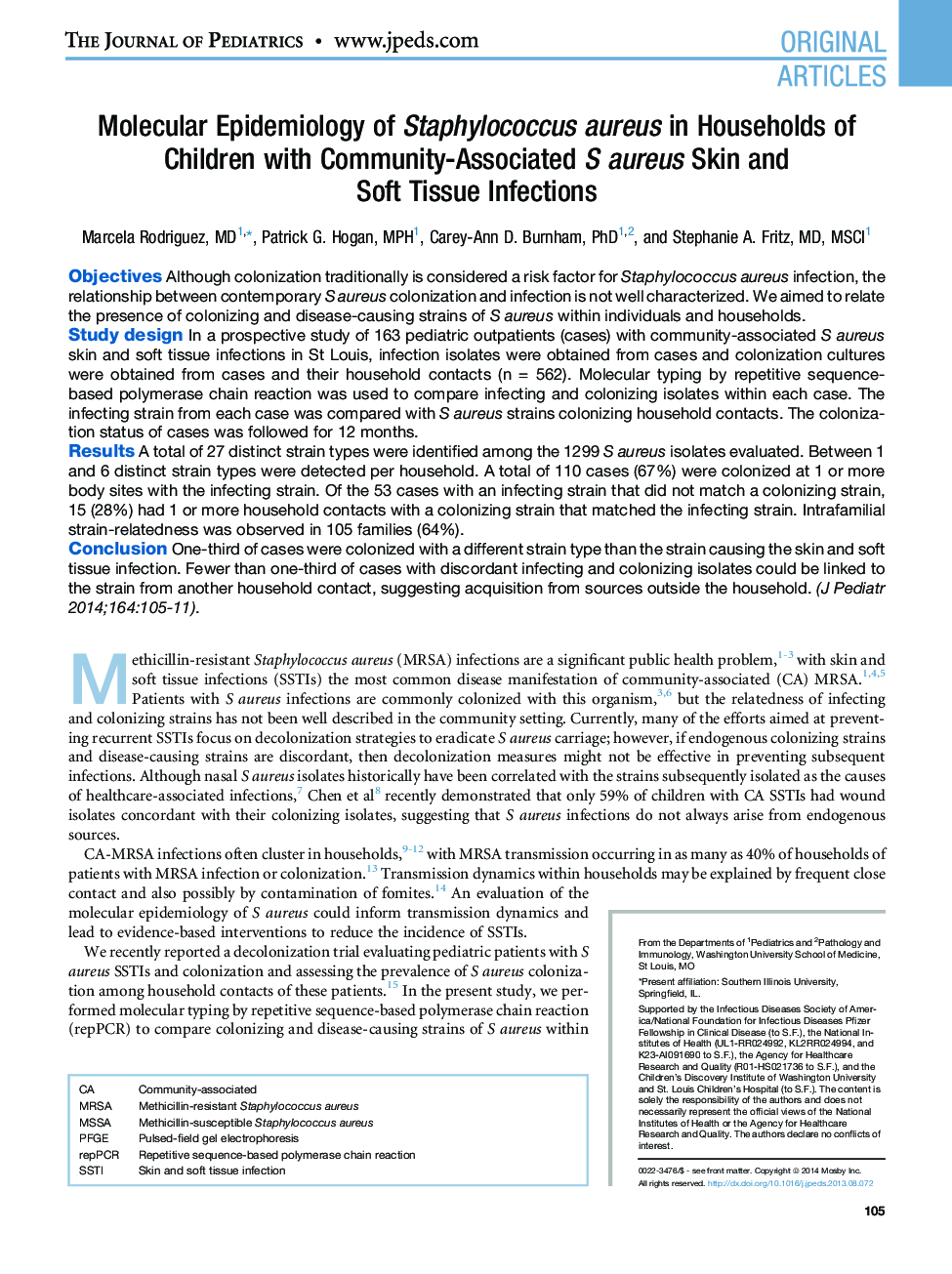| Article ID | Journal | Published Year | Pages | File Type |
|---|---|---|---|---|
| 4165017 | The Journal of Pediatrics | 2014 | 7 Pages |
ObjectivesAlthough colonization traditionally is considered a risk factor for Staphylococcus aureus infection, the relationship between contemporary S aureus colonization and infection is not well characterized. We aimed to relate the presence of colonizing and disease-causing strains of S aureus within individuals and households.Study designIn a prospective study of 163 pediatric outpatients (cases) with community-associated S aureus skin and soft tissue infections in St Louis, infection isolates were obtained from cases and colonization cultures were obtained from cases and their household contacts (n = 562). Molecular typing by repetitive sequence-based polymerase chain reaction was used to compare infecting and colonizing isolates within each case. The infecting strain from each case was compared with S aureus strains colonizing household contacts. The colonization status of cases was followed for 12 months.ResultsA total of 27 distinct strain types were identified among the 1299 S aureus isolates evaluated. Between 1 and 6 distinct strain types were detected per household. A total of 110 cases (67%) were colonized at 1 or more body sites with the infecting strain. Of the 53 cases with an infecting strain that did not match a colonizing strain, 15 (28%) had 1 or more household contacts with a colonizing strain that matched the infecting strain. Intrafamilial strain-relatedness was observed in 105 families (64%).ConclusionOne-third of cases were colonized with a different strain type than the strain causing the skin and soft tissue infection. Fewer than one-third of cases with discordant infecting and colonizing isolates could be linked to the strain from another household contact, suggesting acquisition from sources outside the household.
